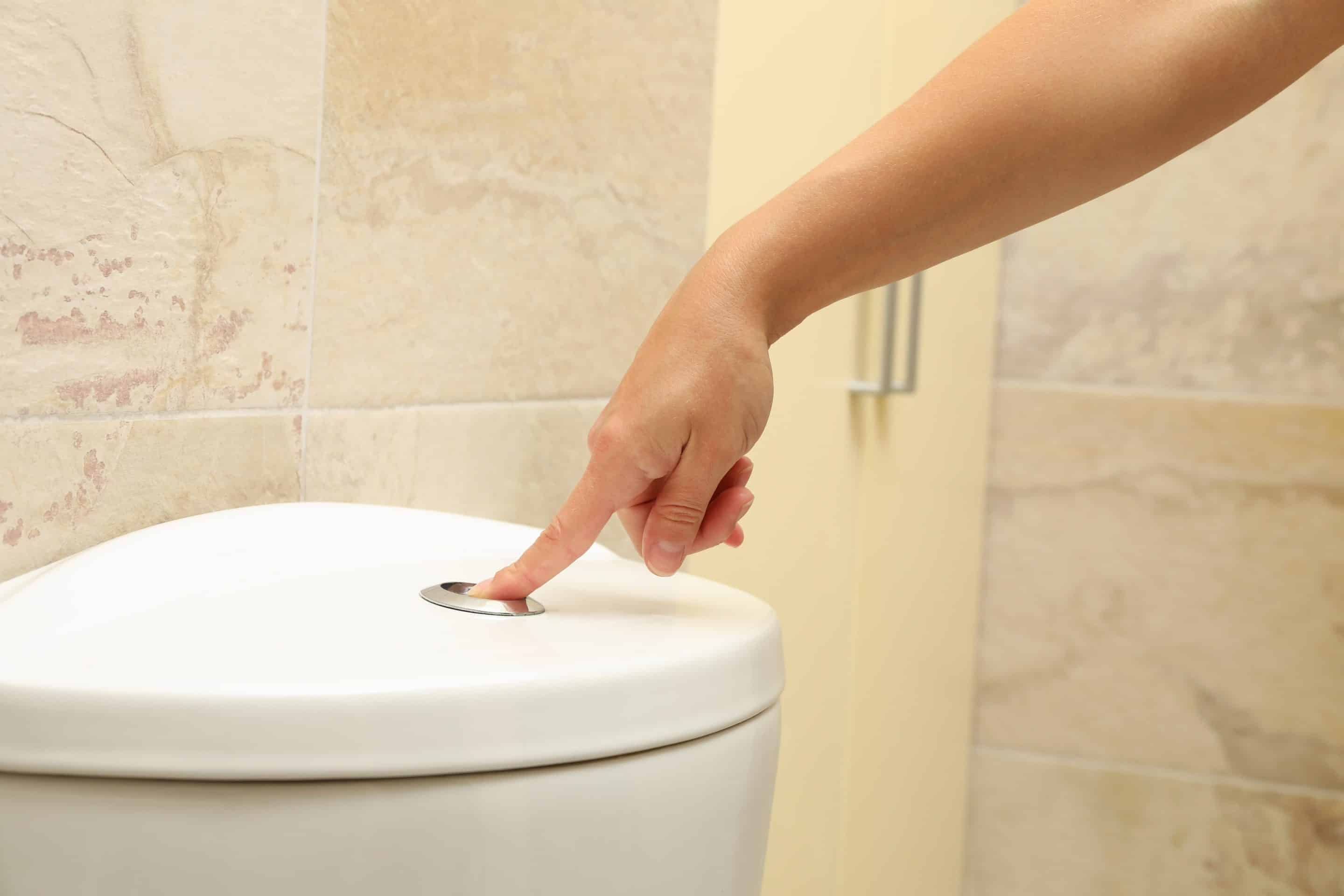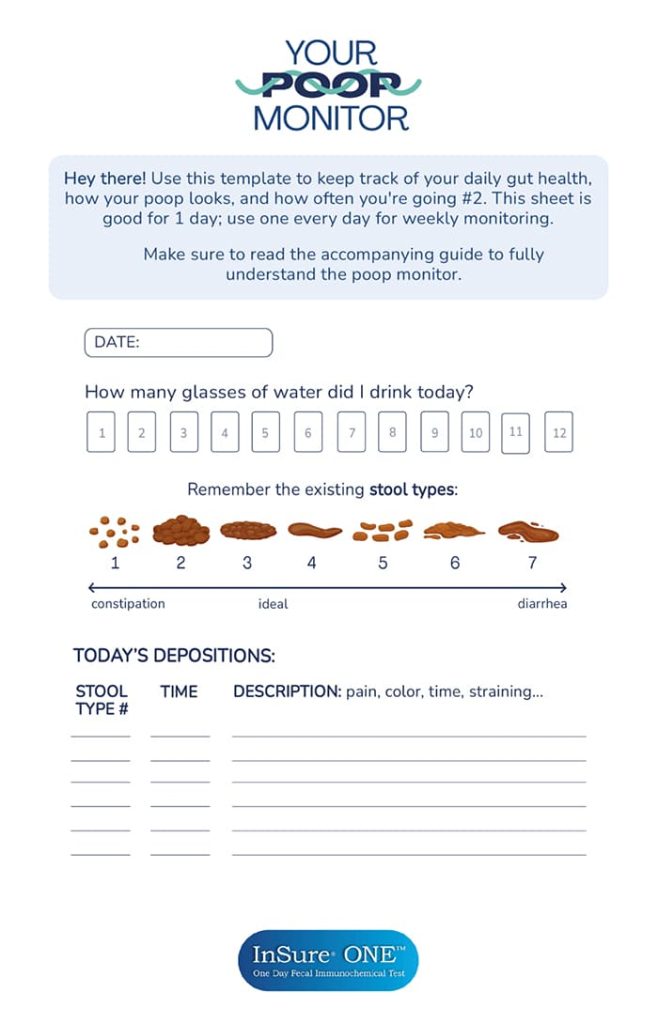It can be concerning to look into the toilet and see blood in your stool. It may appear bright red, dark red, or even dark enough to look black. It might not just be your stool that is red, either. You may see blood in the toilet bowl, turning the water bright red, or you may notice fresh blood on your toilet paper after wiping.
However, the more dangerous fact is that blood is not always visible when it is in your stool. It still exists; it’s just in such a small amount that you cannot see it with your eye alone. Instead, this blood can only be revealed with help from a screening test that uses chemicals or antibodies to detect the blood.
What To Know About Blood in Your Stool
When there is blood in your stool, it can come from anywhere in your gastrointestinal (GI) tract, which includes your stomach, small intestine, colon, rectum, and anus.
In general, the color of the blood may help narrow down the possible source. For example, the brighter red the blood, the closer it comes from the later part of your GI tract (the rectum and anus). In comparison, dark red blood may be a sign of bleeding higher up the GI tract, possibly in the small intestine or colon.
However, blood is not always visible, which is why tests that can detect even the smallest trace of blood are valuable tools.
People with blood in their stool may have some of the following symptoms:
- Anal itching
- Abdominal pain or cramping
- Fever
- Constipation
- Diarrhea
- Changes in bowel habits
- Fatigue
- Nausea or vomiting
- Frequent or painful bowel movements
Providing information about the symptoms you’re experiencing can be beneficial when consulting a doctor. However, relying solely on your symptoms to pinpoint the cause of bloody stool may not always be conclusive, as there often exists an overlap in symptoms among various gastrointestinal conditions.
Furthermore, while some causes of bloody stools have accompanying symptoms, some do not produce any symptoms at all. Regular screening for hidden blood is a valuable tool since you cannot rely on symptoms and visible blood alone to know where there is a problem.
Possible Causes of Blood in the Stool
Several conditions can lead to blood in your stool, ranging from mild to severe. These conditions may also present additional symptoms. It’s essential to consult a doctor for proper diagnosis and treatment.
Hemorrhoids
Hemorrhoids are swollen veins inside the rectum or anus. They’re the most common cause of rectal bleeding, which occurs if the skin made fragile by swelling breaks and bleeds. Hemorrhoids are not serious conditions, and they’re often related to pressure, such as straining to pass a bowel movement or pregnancy.
Anal Fissures
Anal fissures can also occur when straining to poop, and they are a tear in the lining of the anal canal. These are more painful than a hemorrhoid, and while some can heal on their own, others may need treatment.
Diverticulitis
With this condition, the little pockets in the colon’s inner lining (diverticula) become infected and inflamed. This can make the diverticula more likely to rupture, which may cause bleeding.
Inflammatory Bowel Disease
Inflammatory bowel disease (IBD) causes chronic inflammation in the lining of the small and large intestines. Two types of IBD include Crohn’s disease and ulcerative colitis.
In addition to rectal bleeding in severe cases of IBD, other symptoms include chronic diarrhea and abdominal pain.
Peptic Ulcers
Peptic ulcers develop in the stomach or the top of the small intestine when the stomach acid wears away the protective lining. The ulcers are open sores that can cause a burning and gnawing stomach pain. In some cases, the ulcers may bleed.
Colon Polyps or Colorectal Cancer
Colon polyps are small clumps of cells that form on the lining of the colon, and some can become cancerous. These cancerous polyps, indicative of colorectal cancer, are even more likely to bleed.
How To Know If There’s Blood in Your Stool
Since blood in the stool isn’t always visible, detecting it is crucial, as its presence may indicate early-stage conditions like colorectal cancer, enabling timely treatment and better prognosis.
Detecting occult blood can be achieved through a Fecal Immunochemical Test (FIT). This test examines a stool sample or water from the toilet bowl around the stool for blood, capable of identifying blood even when it’s not visible. Completing this examination annually is recommended for early detection and proactive healthcare management.
Seek Medical Attention for Bloody Stools
If there is blood in your stool, there’s a reason for it. Some causes are minor, such as hemorrhoids, but others, like colorectal cancer, can be more severe. Therefore, it is crucial that you do not self-diagnose and always go to your health care provider if you have any symptoms or suspicions.
Taking a FIT is a great first step in being proactive about your healthcare, as it can detect blood that comes from the lower gastrointestinal tract, the area where colorectal cancer commonly develops.
If you’re looking for a convenient FIT to be completed at home, try the InSure One FIT,. It stands out as the only FIT that utilizes toilet bowl water collected from a single bowel movement, eliminating the need to handle stool directly!
References
Diverticular Disease. (2024). National Institute of Diabetes and Digestive and Kidney Diseases. https://www.niddk.nih.gov/health-information/digestive-diseases/diverticulosis-diverticulitis
Colorectal Cancer—Patient Version. (2024). National Cancer Institute; Cancer.gov. https://www.cancer.gov/types/colorectal
Colorectal Cancer Screening Tests. (2024). https://www.cdc.gov/cancer/colorectal/basic_info/screening/tests.htm
Gastrointestinal Bleeding or Blood in the Stool. (2024, February 22). Hopkinsmedicine.org. https://www.hopkinsmedicine.org/health/conditions-and-diseases/gastrointestinal-bleeding-or-blood-in-the-stool

